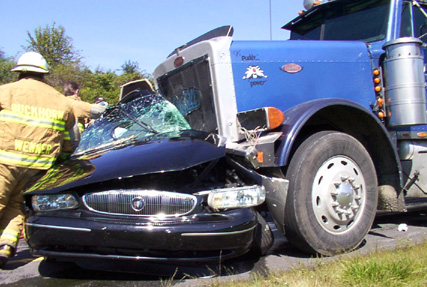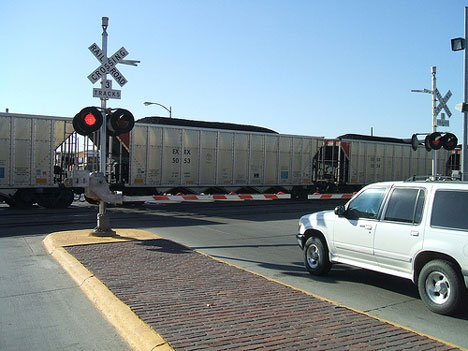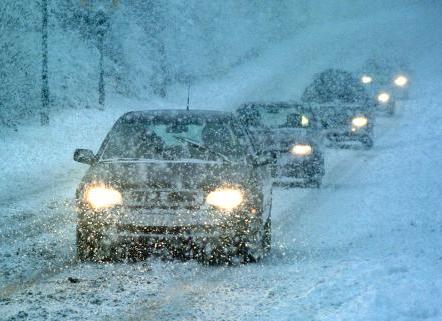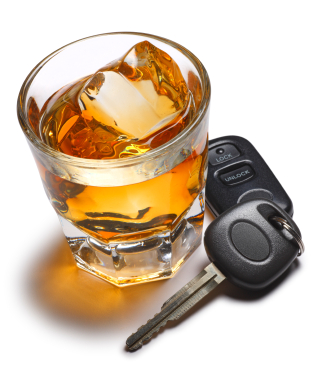I just got off the phone with a potential client who had a very common question. He was involved in an automobile accident yesterday. His car was rendered a total loss and his body was injured. His question was, how can I settle my claim on the car while I am still in medical treatment and I do not know the full extent of my injuries? The answer is simple but it takes a little to explain. First, you need to know that your property damage claim and your bodily injury claim are two separate and distinct claims. Of course they both arise out of the car crash, but they can be resolved independent of each other. First you need to know that for both claims the statute of limitations for both claims is two years from the date of the car accident. This is true whether the damage was caused by a drunk driving accident, a semi tractor-trailer accident or any highway accident. This means that you must have a complaint filed in a court within the two year period, or your right to compensation for your claims will be forever lost.
So, you have plenty of time. I suggest that initially, you stop, take a deep breath and try to not panic. Second, contact the insurance company for the person who was at fault for the collision. Inform them that you want to resolve your property damage claim. I do not suggest that you give the insurance company a statement about what happened. This is never in your best interest. If that insurance company says they will not negotiate with you until you give a statement, you have a few options. You can give the statement, which I do not recommend. You can settle the claim with your own insurance company under the collision provision of your policy. This will necessarily involve paying your deductible, but you will get that back when your insurance company settles their claim against the responsible parties insurance company. Finally you can hire a lawyer.
Most people are unsatisfied with the offer they receive on their totaled car. Usually it is not what they feel their car is worth and usually it is not enough to buy another reliable car. The measure of property damage, in Indiana, is the value of the car immediately before the collision v. the value of the car immediately after the accident. The value after the accident is scrap value and can range from $300 to $1,000.00. Of course it can be more, but that is the exception. The insurance company will want to pay you wholesale bluebook value for a car in average condition. If your car is above average (be honest in your evaluation most cars really are of average condition) then you must be able to document why it is above average in condition. I think you must remain firm that this has to be a retail value, not whole sale value. You cannot buy a car wholesale, and therefore your loss is a retail loss.
When you do reach a fair value and want to settle the claim, the insurance company will present you with a release of your property damage claim. You can sign this without jeopardizing your bodily injury claim. You must read the release and make sure it is for the property damage only. Things to look for are words such as “release of any and all claims” etc. If the release has this language, and you are not settling your bodily injury claim, do not sign it, contact your lawyer immediately for advice.

 In Indiana, as I m sure is true in many parts of the Country there is an old saying. If you don’t like the weather, give it a minute, it will change. This is especially true in the winter were it can be in the 50s one day and the next we can have a foot of snow on the ground. The snow melts and can turn to ice and everything is a mess. It is for this very reason that the Federal Motor Carrier Safety Regulations include a provision for the operation of large trucks in hazardous conditions. We have included the language of the rule below so that you may familiarize yourself with the obligations of the truckers around you while on the road. We all know that semi tractor-trailer crashes can causes serious personal injury and even
In Indiana, as I m sure is true in many parts of the Country there is an old saying. If you don’t like the weather, give it a minute, it will change. This is especially true in the winter were it can be in the 50s one day and the next we can have a foot of snow on the ground. The snow melts and can turn to ice and everything is a mess. It is for this very reason that the Federal Motor Carrier Safety Regulations include a provision for the operation of large trucks in hazardous conditions. We have included the language of the rule below so that you may familiarize yourself with the obligations of the truckers around you while on the road. We all know that semi tractor-trailer crashes can causes serious personal injury and even  Rules exist to ensure the safe operation of
Rules exist to ensure the safe operation of  Semi Tractor-Trailer crashes
Semi Tractor-Trailer crashes  If you, or a friend or loved one is injured as a result of collision with a semi tractor-trailer, and the collision was not their fault, they are protected under the civil justice system. Why is this? The answer is as simple as what your mother taught you as a child. If you are negligent, and that negligence causes injury to a fellow Hoosier, then you are responsible for making up for the harm you cause. Generally, the way society has agreed to as a method of making up for the harm is to be financially responsible. We also agree that financial responsibility is met with insurance.
If you, or a friend or loved one is injured as a result of collision with a semi tractor-trailer, and the collision was not their fault, they are protected under the civil justice system. Why is this? The answer is as simple as what your mother taught you as a child. If you are negligent, and that negligence causes injury to a fellow Hoosier, then you are responsible for making up for the harm you cause. Generally, the way society has agreed to as a method of making up for the harm is to be financially responsible. We also agree that financial responsibility is met with insurance.  Every railroad crossing should have either a stop sign, crossing bars or some type of warning system to alert drivers of oncoming . Unfortunately, in Indiana , not all do and a lot of drivers forget that when there is a meeting between a train and a motor vehicle , the motor vehicle is more likely to lose. Three ladies in Boone County this week were in a car that did not see the train and collided. Death and serious injuries resulted. Anytime you cross a railroad track regardless of the presence or absence of signs or warning systems you are best to assume that there is a train coming until you are sure of the absence of a train. Collisions that can result in serious injuries or death can be prevented with a little common sense and extra caution.
Every railroad crossing should have either a stop sign, crossing bars or some type of warning system to alert drivers of oncoming . Unfortunately, in Indiana , not all do and a lot of drivers forget that when there is a meeting between a train and a motor vehicle , the motor vehicle is more likely to lose. Three ladies in Boone County this week were in a car that did not see the train and collided. Death and serious injuries resulted. Anytime you cross a railroad track regardless of the presence or absence of signs or warning systems you are best to assume that there is a train coming until you are sure of the absence of a train. Collisions that can result in serious injuries or death can be prevented with a little common sense and extra caution.
 There is a dirty little secret about drunk driving accidents in Indiana. Mothers Against Drunk Driving (MADD) has done a tremendous job educating the public about the dangers of drunk driving accidents. Drunk Driving Accidents cause
There is a dirty little secret about drunk driving accidents in Indiana. Mothers Against Drunk Driving (MADD) has done a tremendous job educating the public about the dangers of drunk driving accidents. Drunk Driving Accidents cause  So whenever you hear anyone say your insurance rates are too high because of lawsuits, ask them where they gets their facts. My guess is they will be able to give you no facts. They will simply spout back what they have heard or read from untrustworthy sources. Then think, well wouldn’t my rates be lower if the companies were not spending so much on TV advertising, sponsoring car races and bowl games? Resist the urge to follow the crowd. Demand proof. Defend your mother, who I know taught you to make up for any harm you do. If you spill the milk, clean it up. If you break a window, fix it or pay to have it fixed. If you do not use care in your life and it causes injury to another- Drunk driving, failing to stop at a stop sign, build a scaffold wrong, make up for the harm by demanding that your insurance company does right by the person who was hurt. Demand the insurance company does right by the injured person’s family.
So whenever you hear anyone say your insurance rates are too high because of lawsuits, ask them where they gets their facts. My guess is they will be able to give you no facts. They will simply spout back what they have heard or read from untrustworthy sources. Then think, well wouldn’t my rates be lower if the companies were not spending so much on TV advertising, sponsoring car races and bowl games? Resist the urge to follow the crowd. Demand proof. Defend your mother, who I know taught you to make up for any harm you do. If you spill the milk, clean it up. If you break a window, fix it or pay to have it fixed. If you do not use care in your life and it causes injury to another- Drunk driving, failing to stop at a stop sign, build a scaffold wrong, make up for the harm by demanding that your insurance company does right by the person who was hurt. Demand the insurance company does right by the injured person’s family.
 Last year, in January and February, we had a series of ice storms that left thick ice on everything. Hospital emergency rooms were stretched to their limits with falls on ice resulting in broken bones, spinal cord injuries, severe strains, brain injuries, torn rotator cuffs and more. Thank goodness that this year we have not had to battle the ice yet. However, there is something about the law in the City of Indianapolis regarding sidewalks and snow and ice. Every property owner in the city is required to keep the sidewalks next to their property clear of snow and ice. If the property owner does not keep the snow and ice clear of snow and ice, they may be subject to fines. This law, however, creates no duty on the part of the landowner to keep the sidewalk clear for the benefit of pedestrians. If you encounter ice on a city sidewalk, left by a property owner, who has done nothing to clear it, do not think that they will be responsible for their actions. The law does not require them to clear it for anyone but the City.
Last year, in January and February, we had a series of ice storms that left thick ice on everything. Hospital emergency rooms were stretched to their limits with falls on ice resulting in broken bones, spinal cord injuries, severe strains, brain injuries, torn rotator cuffs and more. Thank goodness that this year we have not had to battle the ice yet. However, there is something about the law in the City of Indianapolis regarding sidewalks and snow and ice. Every property owner in the city is required to keep the sidewalks next to their property clear of snow and ice. If the property owner does not keep the snow and ice clear of snow and ice, they may be subject to fines. This law, however, creates no duty on the part of the landowner to keep the sidewalk clear for the benefit of pedestrians. If you encounter ice on a city sidewalk, left by a property owner, who has done nothing to clear it, do not think that they will be responsible for their actions. The law does not require them to clear it for anyone but the City.